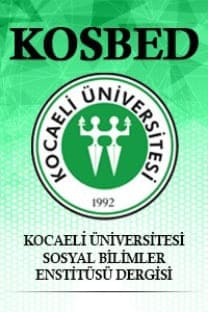Modern Sanatların Gelişiminde Modern Sanat Kurumlarının Rolü ve Kurumsal Refleksivite
Modernleşme her alanda olduğu gibi sanatta da yeni kurumsal gelişmeleri beraberinde getirdi. Dana önceki dönemlerde var olmayan müzeler, sergi salonları, müzik enstitüleri ve konser salonları gibi kurumlar modernleşmenin birer sonucudur. Modernlik öncesi geleneksel toplumlarda saraya, feodal beylerin şatolarına ve Kilise’ye kapanmış olan sanat, modern sanat kurumları vasıtasıyla kamuya açılmıştır. Böylece, modern sanat kurumları sayesinde modern sanatlar yaygın bir etkinlik sahasına kavuşmuştur. Bunda en önemli etken modern sanat kurumlarının refleksif (reflexive) yapısıdır. Kamuoyundaki diyalog süreçlerini refleksif olarak değerlendiren modern sanat kurumları kendilerini sürekli yeniden yapılandırabilme olanağına kavuşur. Sanat neyin güzel ve yaşanmaya değer olduğuna dair bir algının oluşmasına neden olur. Nasıl bir yaşamın yaşanmaya değer olduğuna dair tartışmanın, evrensel referanslar yerine, kamusal müzakereye tabi kılınması modernlikle birlikte yeniden canlanmıştır. Olumlu ve olumsuz pek çok neticeye neden olan bu olgu modern sanat kamusunun ortaya çıkmasına ön ayak olmuştur. Modern sanat kurumları da sanat eserlerine dair tartışmaların yaşandığı kamusal bir alan işlevi görerek sürece önemli katkılarda bulunmuştur
Anahtar Kelimeler:
Sanat, estetik yargı, karşılıklı bilgi, öznelerarasılık, refleksivite, haz, kamu, iletişimsel davranış
The Role of Modern Art Institutions on The Development of Modern Arts and Institutional Reflexivity
Modernization brought about new institutional developments in the art as in the all fields. Museums, exhibition halls, music institutes and concert halls, not existing in the previous times, are results of this modernization. The art, being hidden within the borders of palace, chateaus of feudal monsieur and the Church in traditional societies of pre-modern times, open doors to the public thanks to modern art institutions. Thus, modern arts attained a widespread domain with these modern art institutions. The most significant factor for this is the reflexive structure of modern art institutions. Modern art institutions, viewing dialogue process as reflexive in public opinion, get the opportunity to restructure themselves. Art results in the perception of what is good and worth living. Subjecting the discussion about what kind of life is worth living to public opinion, instead of universal references, revived with modernization. This matter of fact, resulting in many positive and negative consequences, initiated to come up modern art opinion. Modern art institutions made significant contributions to the process through functioning as public domain for discussions regarding art works.
Keywords:
Art, aesthetic judgement, mutual knowledge, intersubjectivity, reflexivity, pleasure, public, communicative behavior,
___
- Bloch, Marc. (2005). FeodalToplum (Çev. Mehmet Ali Kılıçbay). Ankara: DoğuBatıYayınları.
- Brettell, Richard R. (1999). Modern Art 1851-1929. Oxford: Oxford University Press.
- Coeyman, Barbara. (1990). “Theatres for Opera and Ballet during the Reigns of Louis XIV and Louis XV.” Early Music, Vol. 18, No. 1, The Baroque Stage II, pp. 22-37.
- Davis, Peter. (2007). “Place Exploration: Museums, Identity, Community.” Pp. 53-75 in Museums and Their Communities, edited by Sheila Watson. New York: Routledge.
- De Tocqueville, Alexis. (1856), The Old Regime and the Revolution, trans. John Bonner, New York: Harper & Brothers.
- Farrar, Cynthia. (2007). “Power to the People.” Pp. 170-196 in Origins of Democracy in Ancient Greece, edited by Kurt A. Raaflaub, Josiah Ober, and Robert W. Wallace. California: University of California Press.
- Giddens, Anthony. (2004). ModernliğinSonuçları (Çev. ErsinKuşdil).İstanbul: AyrıntıYayınları.
- Giddens, Anthony. (Jan., 1976).Classical Social Theory and the Origins of Modern Sociology. The American Journal of Sociology, Vol.81, No. 4. pp. 703-729.
- Giebelhausen, Michaela. (2006). “Museum Architecture: A Brief History.” Pp. 223-244 in A Companion to Museum Studies, edited by Sharon Macdonald. New York: Routledge.
- Habermas, Jürgen. (1997). KamusallığınYapısalDönüşümü (Çev. Tanıl Bora veMithatSancar).İstanbul: İletişimYayınları.
- Habermas, Jürgen. (2001). İletişimselEylemKuramı (Çev. Mustafa Tüzel).İstanbul: KabalcıYayınevi.
- Hauser, Arnold. (2006). SanatınToplumsalTarihi Cilt/2 (Çev.YıldızGönüllü). Ankara: DenizKitapevi.
- Hoekstra, Kinch. (2007). “Hobbes on the Natural Condition of Mankind.” Pp. 109-127 in The Cambridge Companion to Hobbes’s Leviathan, edited by Patricia Springborg. New York: Cambridge University Press.
- Hollis, Edward. (2009). “Reality Checkpoint.” Cambridge Alimni Magazine 57: 22-27.
- Hume, David. (1997). İnsanDoğasıÜzerineBirİnceleme (Çev.Aziz Yardımlı).İstanbul: İdeaYayınları.
- Hüning, Dieter. (2007). “Hobbes on the Right to Punish.” Pp. 217-242 in The Cambridge Companion to Hobbes’s Leviathan, edited by Patricia Springborg. New York: Cambridge University Press.
- Jaume, Lucien. (2007). “Hobbes and the Philosophical Sources of Liberalism.” Pp. 199-216 in The Cambridge Companion to Hobbes’s Leviathan, edited by Patricia Springborg. New York: Cambridge University Press.
- Loyal, Steven. (2003). The Sociology of Anthony Giddens.London: Pluto Pres.
- Marcuse, Herbert. (1997). EstetikBotut, SanatınSürekliliği: Marxist EstetiğinBirEleştirisineDoğru (Çev.Aziz Yardımlı).İstanbul: İdeaYayınevi.
- McClellan, Andrew. (2003). “A Brief History of the Art Museum Public.” Pp. 1-50 in Art and its Publics Museum Studies at the Millennium, edited by Andrew McClellan. New York: Routledge.
- Newey, Glen, (2008). Hobbes and Leviathan. New York: Routledge.
- Nisbet, Robert. (1952). “Conservatism and Sociology”.American Journal of Sociology, 58: 167-175.
- Physick, J. (1982). The Victoria and Albert Museum: The History of its Building. Oxford: Phaidon and Christies.
- Prior, Nick. (2003). “Having One’s Tate and Eating It: Transformations of the Museum in a Hypermodern Era.” Pp. 51-76 in Art and its Publics Museum Studies at the Millennium, edited by Andrew McClellan. New York: Routledge.
- Shiner, Larry. (2004). Sanatınİcadı: BirKültürTarihi (Çev. İsmailTürkmen). İstanbul: AyrıntıYayınları.
- Tomasello, Michael. (2008). Origins of human communication. London: The MIT Press.
- Wallerstein, Immanuel. (1998). LiberalizmdenSonra (Çev.ErdalÖz).İstanbul: MetisYayınları.
- Wallerstein, Immanuel. (2003). BildiğimizDünyanınSonu: Yirmi Birinci Yüzyıl İçin SosyalBilim, (Çev.TuncayBirkan).İstanbul: MetisYayınları.
- Walton, Douglas. (2007). Media Argumentation: Dialectic, Persuasion, and Rhetoric. New York: Cambridge University Press.
- ISSN: 1302-6658
- Başlangıç: 1997
- Yayıncı: Kocaeli Üniversitesi
Sayıdaki Diğer Makaleler
Oguz Mitolojisinde Kaos ve Onun Deli Paradigmalari
Ev İdaresine Pazarlama ve Yönetim Yaklaşım, Yöntem ve Tekniklerinin Uygulanabilirliği
Modern Sanatların Gelişiminde Modern Sanat Kurumlarının Rolü ve Kurumsal Refleksivite
Kentsel Yoksulluk ve Mikro Finansman: Kocaeli Örneği
Yusuf BAYRAKTUTAN, Merve AKATAY
Havayolu İşletmelerinde Hizmet Kalitesi: THY’de Bir Araştırma
